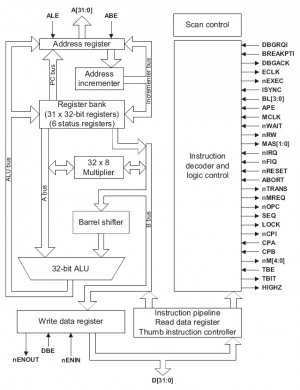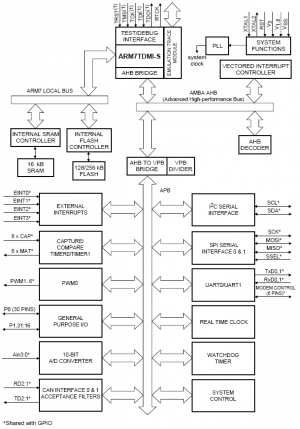ARM
The ARM architecture (originally the Acorn RISC Machine) is a general purpose 32-bit RISC processor architecture that is widely used in a number of applications. It is designed to be programmed in assembly language and has several advanced features that makes it extremely efficient.
Features:
- Shifts by a constant are free.
- Conditional checks and executions are free.
- Any number of registers can be transferred to or from memory using a single instruction.
- Load/Store instructions have pre/post indexing by constants or a second register with an optional shift.
- The program counter is mapped to register 15.
This results in:
- Code with a fixed decimal point runs at the same speed as pure integer code.
- Few or no pipeline stalls and no ugly branching around just a few instructions.
- High code density and fast memory transfers without cache.
- Compact, fast and readable code.
- Very simple to make PC relative code with no loss in efficiency.
ARM Ltd does not manufacture chips but sell licenses to manufacturers. This means that there are many sources and many different versions suitable for almost any purpose. For control purposes the NXP LPC210x is probably the best choice. It is priced at the same level as many ancient 8 bit microcontrollers and delivers many times the efficiency and performance.
The first ARM chip was designed by Steve Furber and Sophie Wilson at Acorn Computer in 1983-1985. No resources were available and a simulation was written in BASIC. The resulting chip had less than half the number of transistor of a Motorola 68000 and beat it in every way, even software division on the ARM was faster than the hardware division of the 68000.

